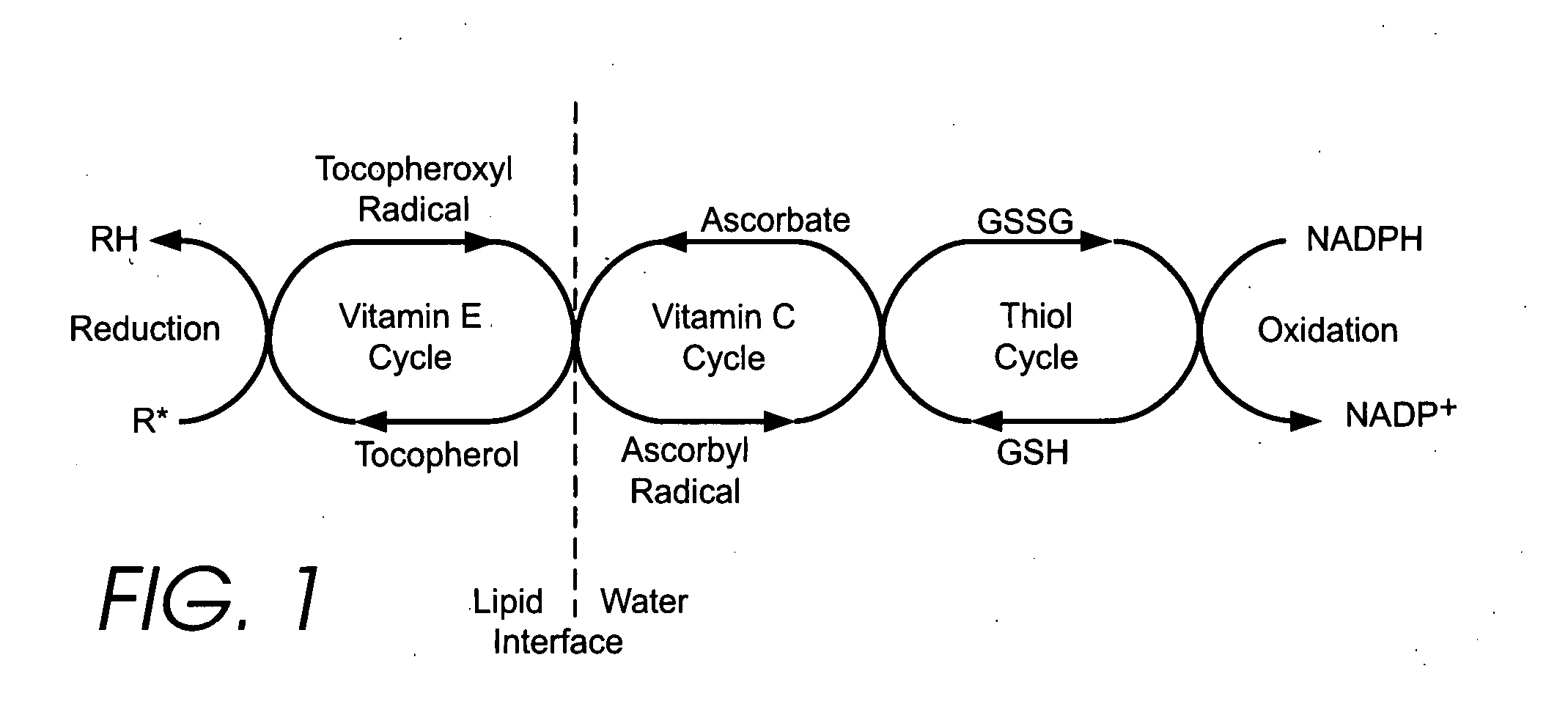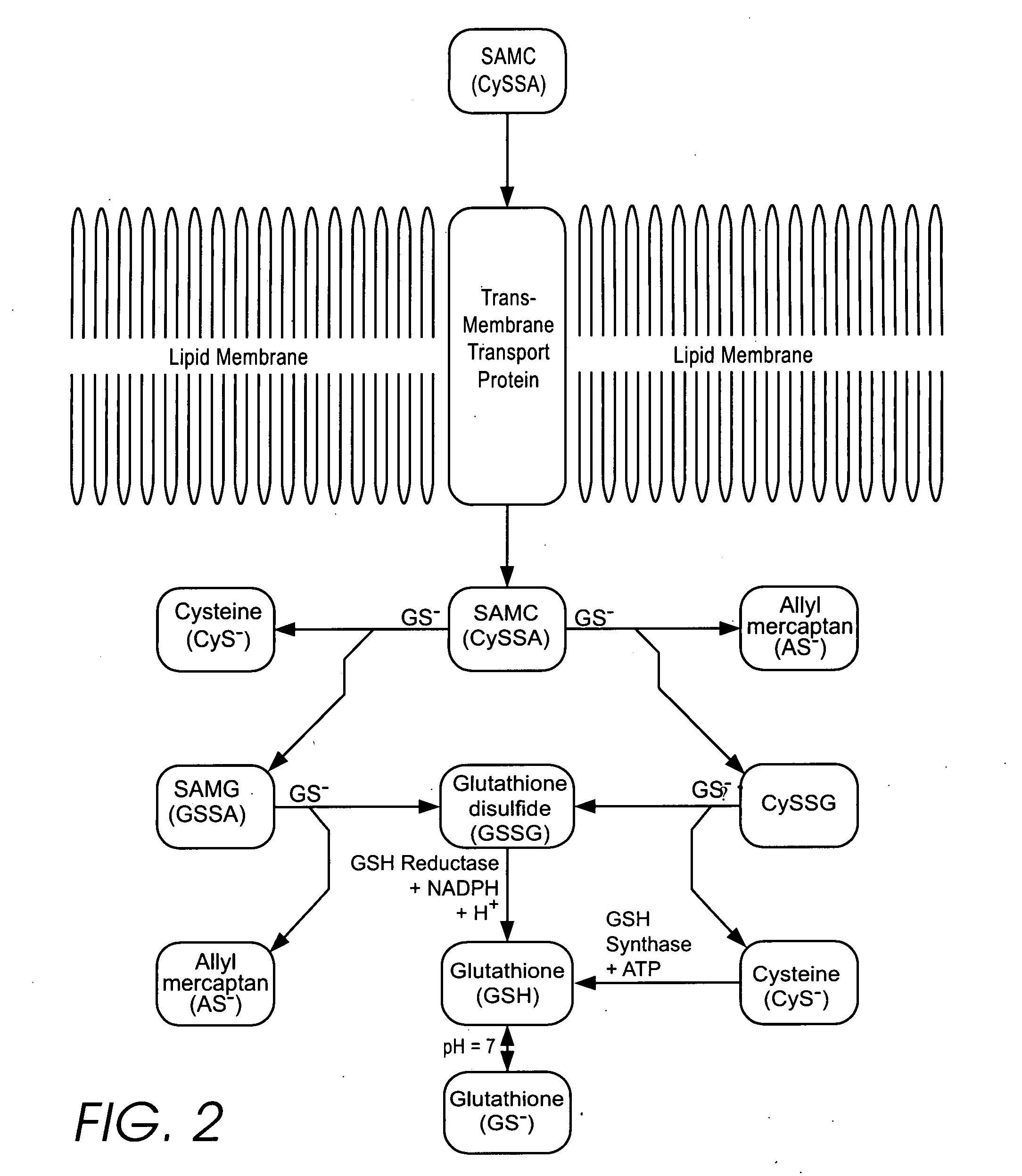Method to increase the bioavailability of cysteine
a bioavailability and cysteine technology, applied in the field of increasing the bioavailability of cysteine, can solve the problems of loss of effectiveness, poor bioavailability, and limited effectiveness of these methods
- Summary
- Abstract
- Description
- Claims
- Application Information
AI Technical Summary
Benefits of technology
Problems solved by technology
Method used
Image
Examples
Embodiment Construction
6.1 Augmentation of Cysteine and Glutathione
[0331] Although other researchers who have studied the disease or age related change in plasma thiol / disulfide REDST have attempted to modify it through the use of cysteine prodrugs, the applicant has discovered that their approach inevitably increases the level of cystine and is therefore inherently somewhat self-defeating. Although cysteine supplementation can clearly be beneficial when there is an actual cyst(e)ine deficiency, in many cases sufficient cyst(e)ine is present but the REDST problem is that too much of it is in the form of cystine.
[0332] The applicant has discovered that in many cases it is more appropriate to reduce the existing cystine to cysteine, and that an extracellular antioxidant can be utilized to do this. The applicant has further discovered that a membrane permeable thiol that oxidizes to form a membrane permeable disulfide can function as a recycling transmembrane redox shuttle, effectively coupling the reductiv...
PUM
| Property | Measurement | Unit |
|---|---|---|
| body weight | aaaaa | aaaaa |
| body weight | aaaaa | aaaaa |
| partition coefficient | aaaaa | aaaaa |
Abstract
Description
Claims
Application Information
 Login to View More
Login to View More - R&D
- Intellectual Property
- Life Sciences
- Materials
- Tech Scout
- Unparalleled Data Quality
- Higher Quality Content
- 60% Fewer Hallucinations
Browse by: Latest US Patents, China's latest patents, Technical Efficacy Thesaurus, Application Domain, Technology Topic, Popular Technical Reports.
© 2025 PatSnap. All rights reserved.Legal|Privacy policy|Modern Slavery Act Transparency Statement|Sitemap|About US| Contact US: help@patsnap.com



